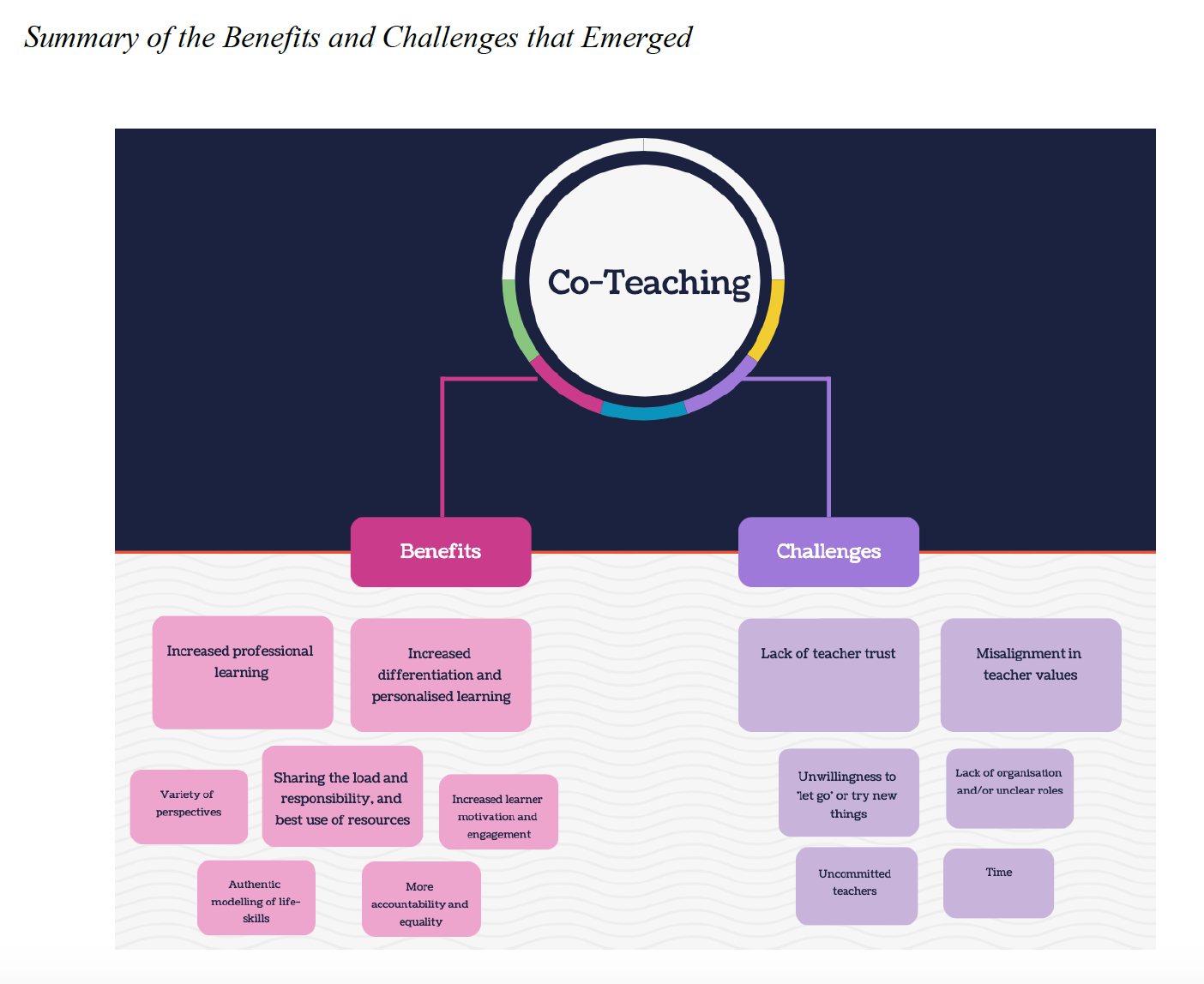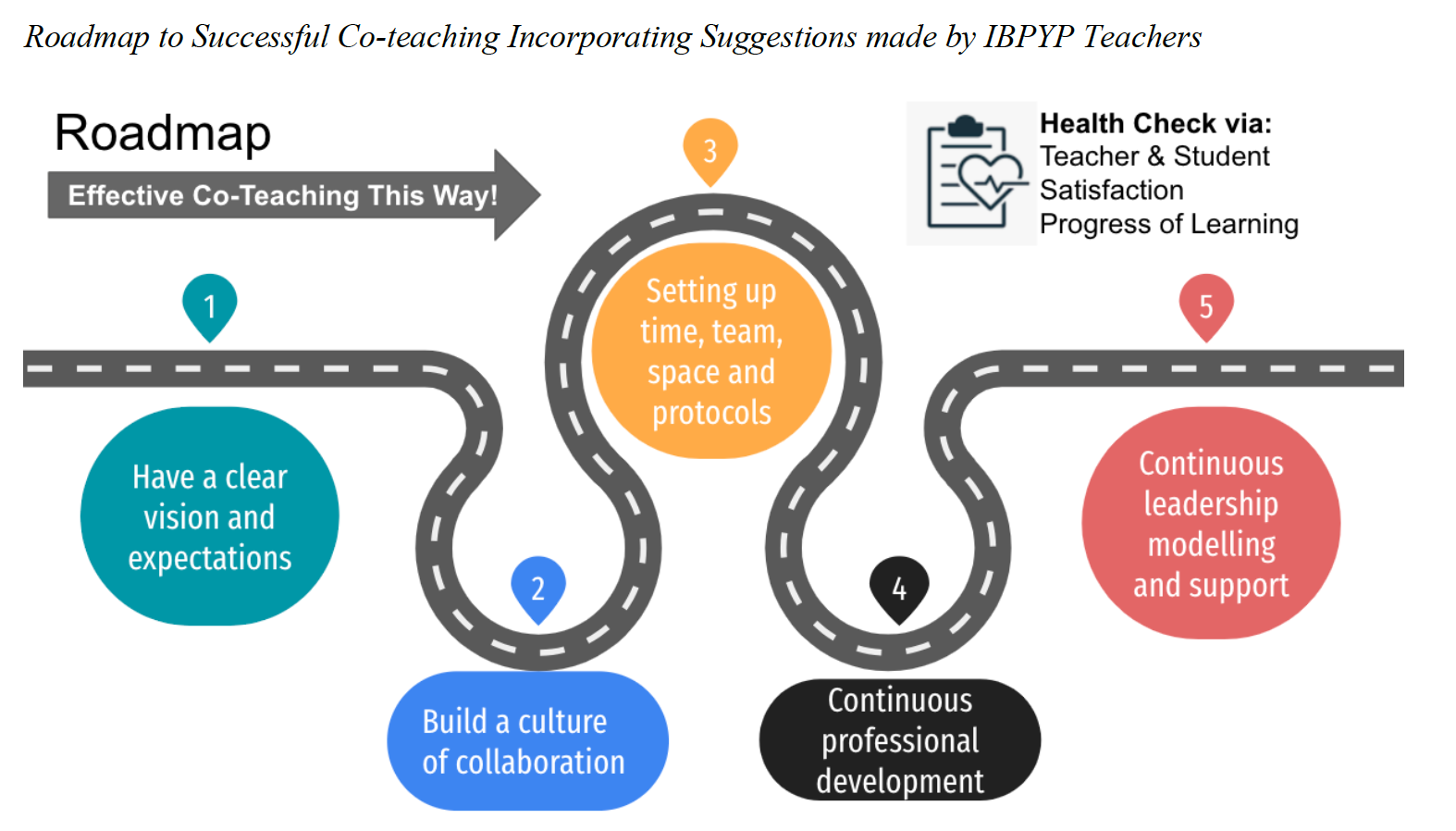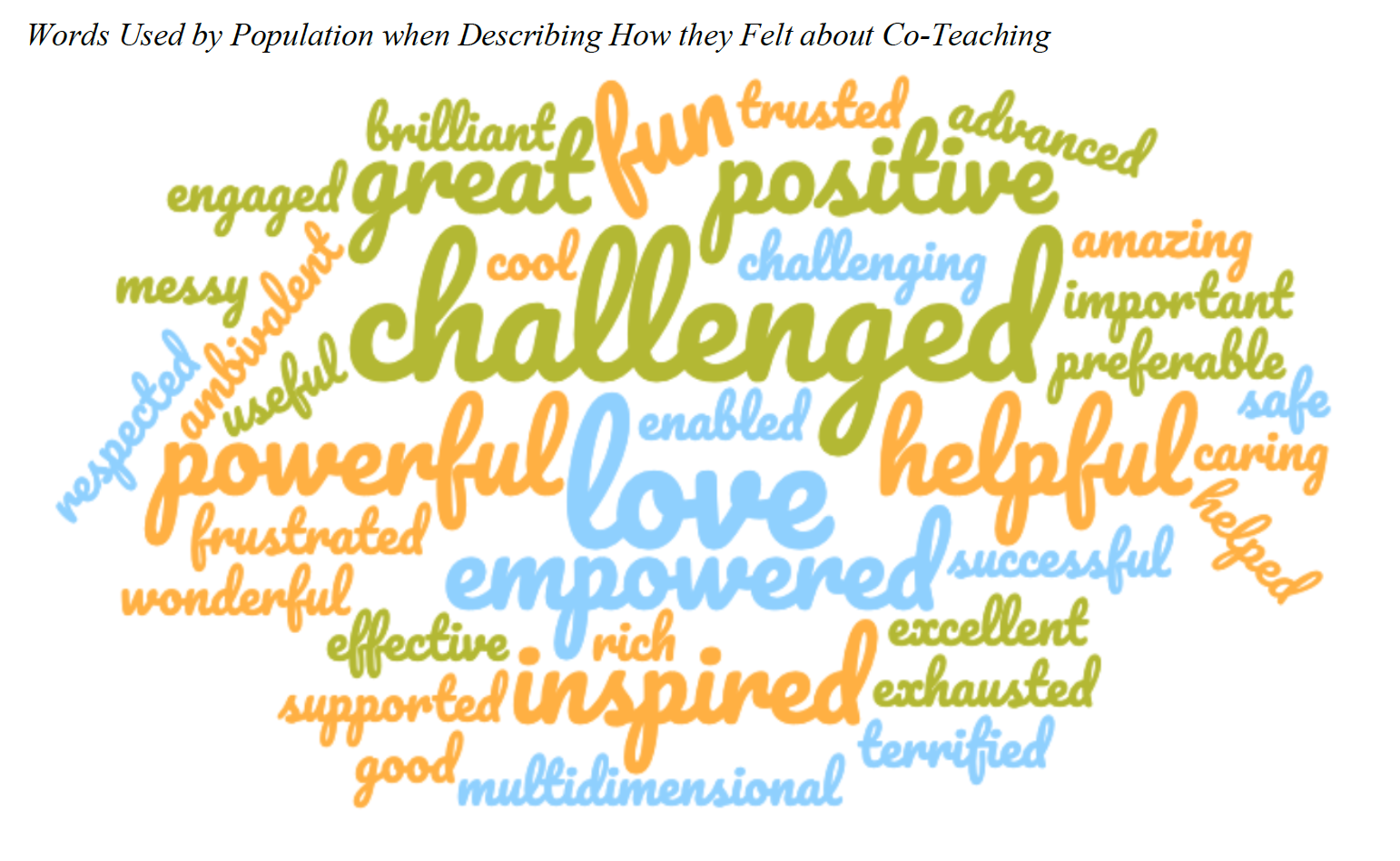At the International School of Uganda, professional learning has been focused on inclusion and agency over the last few years. The faculty recognized that agency demands a curriculum and pedagogy that represents and honours diversity and personalised learning, and that this could be achieved with greater success through co-teaching. We recognised that co-teaching required a major shift in structures and attitudes, and that change takes time and requires a sensitive and thoughtful approach.
As the Primary Years Programme (PYP) coordinator, I wanted to understand how the teachers in the Junior School felt about co-teaching so that I could support them better. I came up with some research questions: What do teachers think about co-teaching? What are the benefits and challenges? How can we support teachers in adopting co-teaching and evaluate its effectiveness? I created a questionnaire that allowed teachers to share their thoughts openly, and I also held informal focus group sessions. The data we collected gave us valuable insights.
“You can collaborate without co-teaching, but you can’t co-teach without collaboration.”
Although teachers had their own definitions of co-teaching, some common ideas emerged. They agreed that co-teaching involves having more than one teacher responsible for planning, teaching, and assessing the same group of students. Collaboration was mentioned by some teachers, but we discussed that co-teaching and collaboration are not the same. One teacher summed it up by saying, “You can collaborate without co-teaching, but you can’t co-teach without collaboration.” We talked about different models of co-teaching and how it can vary based on the needs of students. Most teachers had positive feelings about co-teaching but also found it challenging. They said things like:
- “It’s a powerful tool,”
- “It’s so much fun,”
- “I wouldn’t want to teach any other way.”
Teachers saw many benefits in co-teaching. They mentioned increased differentiation and more personalized learning opportunities. They believed that co-teaching allowed for better quality and a greater variety of learning experiences because it brought together different ideas, resources, and spaces. One teacher wrote:
“Children benefit greatly from experiencing the unique strengths, talents, and personalities of multiple teachers. When we work together, with more differentiation, we come closer to excellence.”
Teachers also recognized the professional growth that comes from co-teaching and the ability to share ideas, strategies, reflections, and perspectives. They saw how co-teachers could model collaboration and problem-solving for students, and they felt a sense of increased accountability.
However, some challenges were mentioned. Teachers talked about misalignment in values, insecurities, and a lack of trust as potential hurdles. They also pointed out the difficulty when one teacher is disengaged or dominant, leading to an imbalance of power or workload. One teacher shared:
“For some people, co-teaching is just not possible. They don’t have the personality or skills to work with another person in a teaching environment.”
We also heard concerns about commitment and open-mindedness from adults, leading to personality clashes and power struggles.

To support co-teaching, teachers suggested three strategies:
- Having a clear vision and expectations from the beginning of the school year. Building trust and a sense of teamwork through exercises was seen as crucial. Creating a culture of collective efficacy, where everyone works together to do their best for students, was highlighted.
- Providing dedicated planning and preparation time, with a balance between support from leadership and independent preparation.
- Ongoing professional development focused on co-teaching was seen as essential. Many teachers mentioned their own happiness and willingness to co-teach as an indicator of team success. They also emphasized the importance of goal setting, acting/observing, and reflecting on evidence of effective co-teaching.

Based on the data collected, many teachers feel empowered by co-teaching and see great potential in its success. Once obstacles are removed and support is provided, most teachers are willing to embrace the benefits of co-teaching. It’s encouraging to note that teachers don’t view co-teaching as only benefiting students with additional needs but recognize it as a valuable approach for all children. They understand the importance of building relationships and creating a collaborative culture, acknowledging the challenges while embracing the opportunities to learn from one another and promote inclusion.

These findings have provided valuable insights on how I can support teams in the future. Schools need educators who are willing and skilled in providing authentic and suitable curriculum and teaching methods for all learners. To achieve inclusion, educators must offer personalized and challenging learning experiences, creating numerous opportunities for success. Collaborative practices like co-teaching offer a practical solution to support this goal. However, it requires a shift in thinking and school systems. It relies on teachers who genuinely care about every student’s right to learn and who work diligently to achieve that goal. They solve problems, generate new strategies, resolve differences, and experiment with alternative solutions. If we truly value the right of every child to belong and learn, then schools must foster agency through the collective strength of teacher teams who work together diligently to achieve this shared objective.

Sarah Ssengendo is the PYP coordinator and deputy principal at the International School of Uganda, in East Africa. She is passionate about inquiry and play-based learning and enjoys the collaborative and creative nature of contemporary education.

No comments yet.